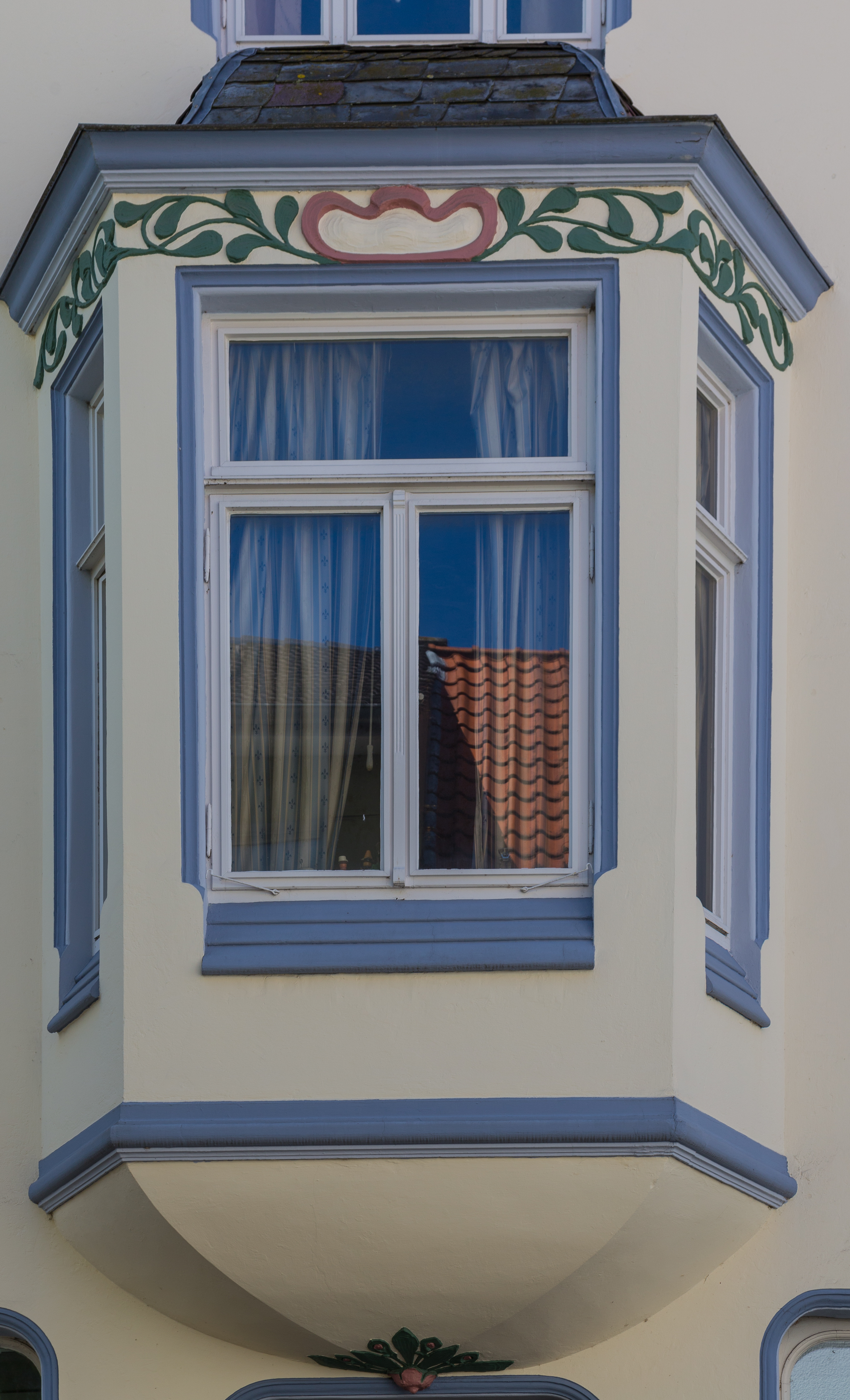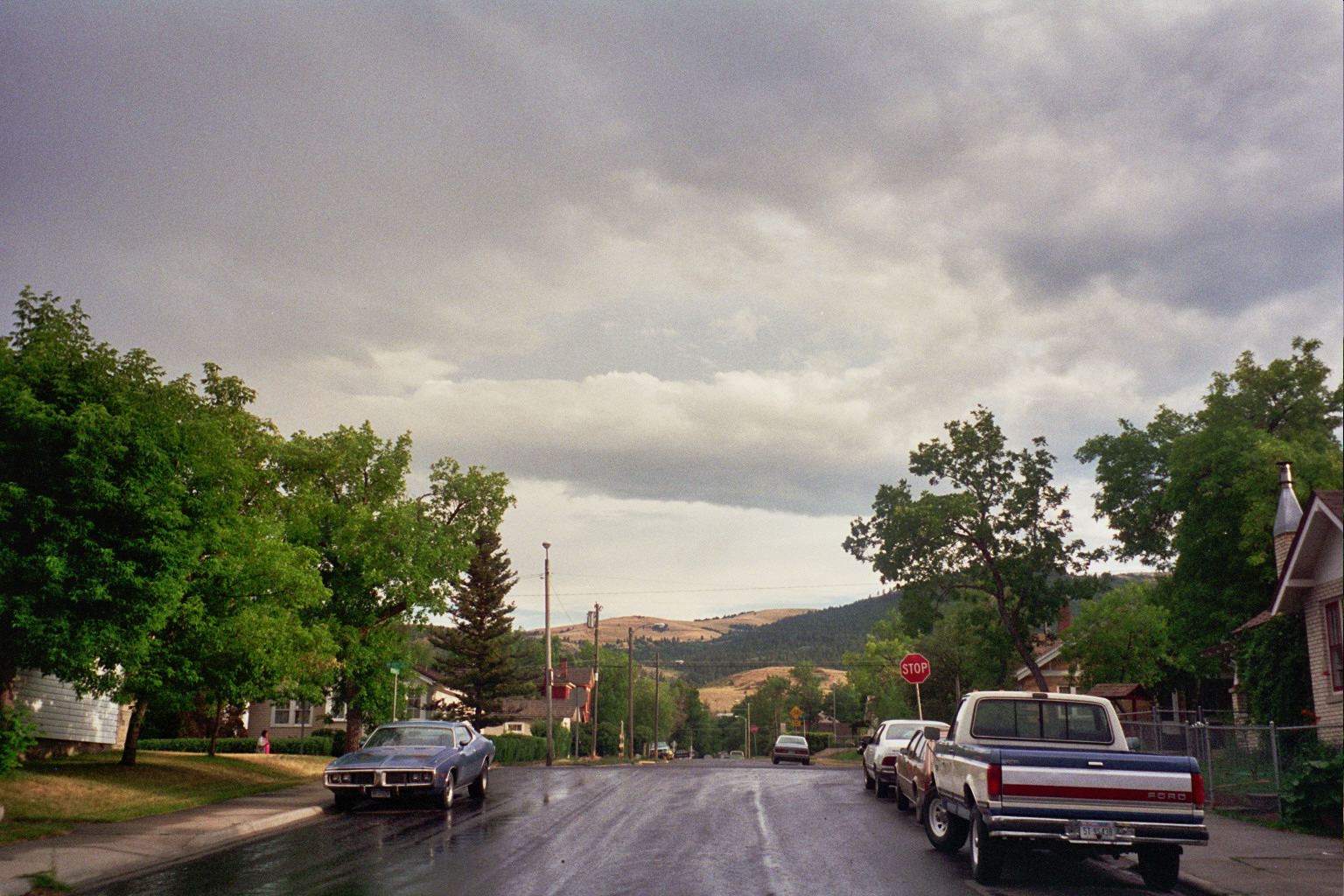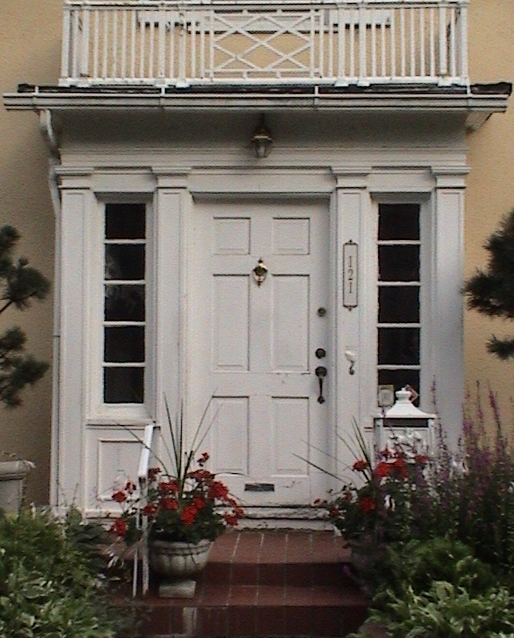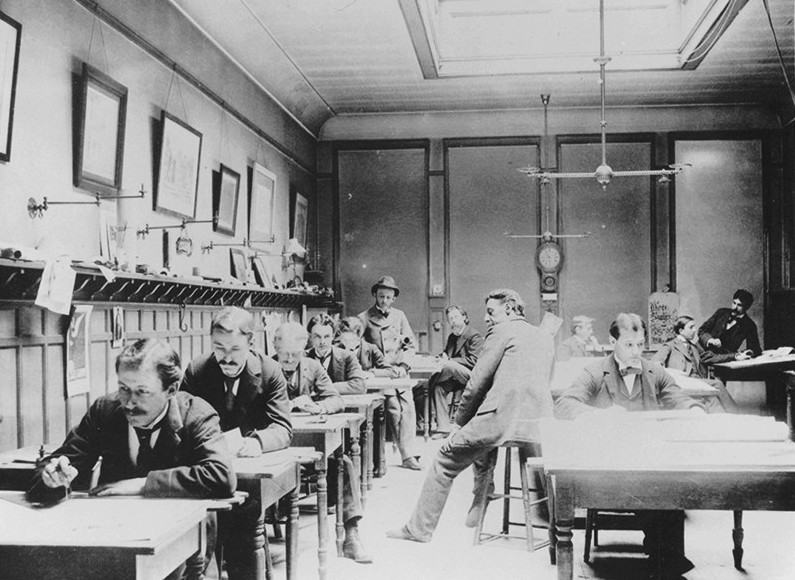|
Saint James Court Apartments
The Saint James Court Apartments is a luxury apartment building designed by Ferry & Clas and built in 1903 in Milwaukee, Wisconsin. In 2008, the site was added to the National Register of Historic Places. History Alfred C. Clas originally designed the building in 1895, but it was not built until 1903 after he purchased the land it sits on. It is adjacent to St. James Episcopal Church and across the street from the Central Library, the latter of which was also designed by Ferry & Clas and both of which are also listed on the National Register of Historic Places. The apartment block was built by Alfred's brother Louis Clas. It is six stories, with a design influenced by Beaux Arts style. The west and north faces are ornamented with corner quoins and a cornice with classical moldings and modillion blocks above a line of dentils. Several columns of windows protrude as multi-story bays. The main entrance on the west side is a single door with sidelights beneath a wood frieze ... [...More Info...] [...Related Items...] OR: [Wikipedia] [Google] [Baidu] |
Milwaukee, Wisconsin
Milwaukee ( ), officially the City of Milwaukee, is both the most populous and most densely populated city in the U.S. state of Wisconsin and the county seat of Milwaukee County. With a population of 577,222 at the 2020 census, Milwaukee is the 31st largest city in the United States, the fifth-largest city in the Midwestern United States, and the second largest city on Lake Michigan's shore behind Chicago. It is the main cultural and economic center of the Milwaukee metropolitan area, the fourth-most densely populated metropolitan area in the Midwest. Milwaukee is considered a global city, categorized as "Gamma minus" by the Globalization and World Cities Research Network, with a regional GDP of over $102 billion in 2020. Today, Milwaukee is one of the most ethnically and culturally diverse cities in the U.S. However, it continues to be one of the most racially segregated, largely as a result of early-20th-century redlining. Its history was heavily influenced by ... [...More Info...] [...Related Items...] OR: [Wikipedia] [Google] [Baidu] |
Bay Window
A bay window is a window space projecting outward from the main walls of a building and forming a bay in a room. Types Bay window is a generic term for all protruding window constructions, regardless of whether they are curved or angular, or run over one or multiple storeys. In plan, the most frequently used shapes are isosceles trapezoid (which may be referred to as a ''canted bay window'') and rectangle. But other polygonal shapes with more than two corners are also common as are curved shapes. If a bay window is curved it may alternatively be called '' bow window.'' Bay windows in a triangular shape with just one corner exist but are relatively rare. A bay window supported by a corbel, bracket or similar is called an oriel window. "Rawashin" is a traditional and distinctive style of corbelled bay window in Jeddah, Saudi Arabia (e.g., as on the frontage of Nasseef House). Uses Most medieval bay windows and up to the Baroque era are oriel windows. They frequently ap ... [...More Info...] [...Related Items...] OR: [Wikipedia] [Google] [Baidu] |
Buildings And Structures In Milwaukee
A building, or edifice, is an enclosed structure with a roof and walls standing more or less permanently in one place, such as a house or factory (although there's also portable buildings). Buildings come in a variety of sizes, shapes, and functions, and have been adapted throughout history for a wide number of factors, from building materials available, to weather conditions, land prices, ground conditions, specific uses, prestige, and aesthetic reasons. To better understand the term ''building'' compare the list of nonbuilding structures. Buildings serve several societal needs – primarily as shelter from weather, security, living space, privacy, to store belongings, and to comfortably live and work. A building as a shelter represents a physical division of the human habitat (a place of comfort and safety) and the ''outside'' (a place that at times may be harsh and harmful). Ever since the first cave paintings, buildings have also become objects or canvasses of much artist ... [...More Info...] [...Related Items...] OR: [Wikipedia] [Google] [Baidu] |
Apartment Buildings In Wisconsin
An apartment (American English), or flat ( British English, Indian English, South African English), is a self-contained housing unit (a type of residential real estate) that occupies part of a building, generally on a single story. There are many names for these overall buildings, see below. The housing tenure of apartments also varies considerably, from large-scale public housing, to owner occupancy within what is legally a condominium ( strata title or commonhold), to tenants renting from a private landlord (see leasehold estate). Terminology The term ''apartment'' is favored in North America (although in some cities ''flat'' is used for a unit which is part of a house containing two or three units, typically one to a floor). In the UK, the term ''apartment'' is more usual in professional real estate and architectural circles where otherwise the term ''flat'' is used commonly, but not exclusively, for an apartment on a single level (hence a 'flat' apartment). In some ... [...More Info...] [...Related Items...] OR: [Wikipedia] [Google] [Baidu] |
Residential Buildings On The National Register Of Historic Places In Wisconsin
A residential area is a land used in which housing predominates, as opposed to industrial and commercial areas. Housing may vary significantly between, and through, residential areas. These include single-family housing, multi-family residential, or mobile homes. Zoning for residential use may permit some services or work opportunities or may totally exclude business and industry. It may permit high density land use or only permit low density uses. Residential zoning usually includes a smaller FAR (floor area ratio) than business, commercial or industrial/manufacturing zoning. The area may be large or small. Overview In certain residential areas, especially rural, large tracts of land may have no services whatever, such that residents seeking services must use a motor vehicle or other transportation, so the need for transportation has resulted in land development following existing or planned transport infrastructure such as rail and road. Development patterns may be regu ... [...More Info...] [...Related Items...] OR: [Wikipedia] [Google] [Baidu] |
National Park Service
The National Park Service (NPS) is an List of federal agencies in the United States, agency of the Federal government of the United States, United States federal government within the United States Department of the Interior, U.S. Department of the Interior that manages all List of areas in the United States National Park System, national parks, most National monument (United States), national monuments, and other natural, historical, and recreational properties with various title designations. The United States Congress, U.S. Congress created the agency on August 25, 1916, through the National Park Service Organic Act. It is headquartered in Washington, D.C., within the main headquarters of the Department of the Interior. The NPS employs approximately 20,000 people in 423 individual units covering over 85 million acres in List of states and territories of the United States, all 50 states, the Washington, D.C., District of Columbia, and Territories of the United States, US territ ... [...More Info...] [...Related Items...] OR: [Wikipedia] [Google] [Baidu] |
Frieze
In architecture, the frieze is the wide central section part of an entablature and may be plain in the Ionic or Doric order, or decorated with bas-reliefs. Paterae are also usually used to decorate friezes. Even when neither columns nor pilasters are expressed, on an astylar wall it lies upon the architrave ("main beam") and is capped by the moldings of the cornice. A frieze can be found on many Greek and Roman buildings, the Parthenon Frieze being the most famous, and perhaps the most elaborate. This style is typical for the Persians. In interiors, the frieze of a room is the section of wall above the picture rail and under the crown moldings or cornice. By extension, a frieze is a long stretch of painted, sculpted or even calligraphic decoration in such a position, normally above eye-level. Frieze decorations may depict scenes in a sequence of discrete panels. The material of which the frieze is made of may be plasterwork, carved wood or other decorative me ... [...More Info...] [...Related Items...] OR: [Wikipedia] [Google] [Baidu] |
Sidelights
A sidelight or sidelite in a building is a window, usually with a vertical emphasis, that flanks a door or a larger window. Sidelights are narrow, usually stationary and found immediately adjacent doorways.Barr, Peter.Illustrated Glossary, 19th Century Adrian Architecture, accessed June 17, 2009.The College Hill Historic District ", Community Partnership Center, accessed June 17, 2009. While most commonly found as supporting elements emphasizing the importance of a primary entrance, sidelights may be employed at any interior or exterior door where a visual emphasis is desired, or where additional light or visibility is needed. Design Sidelights are often found in tandem with trans ...[...More Info...] [...Related Items...] OR: [Wikipedia] [Google] [Baidu] |
Dentils
A dentil (from Lat. ''dens'', a tooth) is a small block used as a repeating ornament in the bedmould of a cornice. Dentils are found in ancient Greek and Roman architecture, and also in later styles such as Neoclassical, Federal, Georgian Revival, Greek Revival, Renaissance Revival, Second Empire, and Beaux-Arts architecture. Dentillation refers to use of a course of dentils. History Origin The Roman architect Vitruvius (iv. 2) states that the dentil represents the end of a rafter (''asser''). It occurs in its most pronounced form in the Ionic temples of Asia Minor, the Lycian tombs and the porticoes and tombs of Persia, where it clearly represents the reproduction in stone of timber construction. The earliest example is found carved into the rock of the tomb of Darius, c. 500 BC, reproducing the portico of his palace. Its first employment in Athens is in the cornice of the caryatid portico of the Erechtheum (480 BC). When subsequently introduced into the bed-mould of the c ... [...More Info...] [...Related Items...] OR: [Wikipedia] [Google] [Baidu] |
Ferry & Clas
Ferry & Clas was an architectural firm in Wisconsin. It designed many buildings that are listed on the National Register of Historic Places. George Bowman Ferry (1851 - 1918) and Alfred Charles Clas (1859 - 1942) were partners. The partnership was established in 1890. The Book of the Office Work of Geo. B. Ferry and Alfred C. Clas, Architects, Milwaukee, Wisconsin was published in 1895. The partnership was dissolved in 1912. Notable works * First Unitarian Church (1891), 1009 E. Ogden Ave., Milwaukee, WI (Ferry & Clas) NRHP-listed *Pabst Mansion (1892), 2000 W. Wisconsin Ave., Milwaukee, WI (Ferry & Class) NRHP-listed * Central Library (1895), 814 W. Wisconsin Ave., Milwaukee, WI (Ferry & Clas) NRHP-listed *Mrs. Willis Danforth house (1897), 819 N. Cass St., Milwaukee, a 2.5-story house with half-timbering in the gable end (a Tudor Revival decoration). Contributing building in 1986-NRHP-listed Cass-Wells Street Historic District. With * L. D. Fargo Public Library (1899-190 ... [...More Info...] [...Related Items...] OR: [Wikipedia] [Google] [Baidu] |
Modillion
A modillion is an ornate bracket, more horizontal in shape and less imposing than a corbel. They are often seen underneath a cornice which it helps to support. Modillions are more elaborate than dentils (literally translated as small teeth). All three are selectively used as adjectival historic past participles (''corbelled, modillioned, dentillated'') as to what co-supports or simply adorns any high structure of a building, such as a terrace of a roof (flat area of a roof), parapet, pediment/entablature, balcony, cornice band or roof cornice. Modillions occur classically under a Corinthian or a Composite cornice, but may support any type of eaves cornice. They may be carved or plain. See also * Glossary of architecture Gallery Abbaye Ste Foy à Conques (25) - Frises et corbeaux du chevet.jpg, Modillions carved with animal heads in the Abbaye Ste Foy in Conques (France). 20130809 dublin036.JPG, Trinity College, in Dublin. Disegno di Modiglione (mensola, chiave di volta) a do ... [...More Info...] [...Related Items...] OR: [Wikipedia] [Google] [Baidu] |
Cornice
In architecture, a cornice (from the Italian ''cornice'' meaning "ledge") is generally any horizontal decorative moulding that crowns a building or furniture element—for example, the cornice over a door or window, around the top edge of a pedestal, or along the top of an interior wall. A simple cornice may be formed just with a crown, as in crown moulding atop an interior wall or above kitchen cabinets or a bookcase. A projecting cornice on a building has the function of throwing rainwater free of its walls. In residential building practice, this function is handled by projecting gable ends, roof eaves and gutters. However, house eaves may also be called "cornices" if they are finished with decorative moulding. In this sense, while most cornices are also eaves (overhanging the sides of the building), not all eaves are usually considered cornices. Eaves are primarily functional and not necessarily decorative, while cornices have a decorative aspect. A building's project ... [...More Info...] [...Related Items...] OR: [Wikipedia] [Google] [Baidu] |







